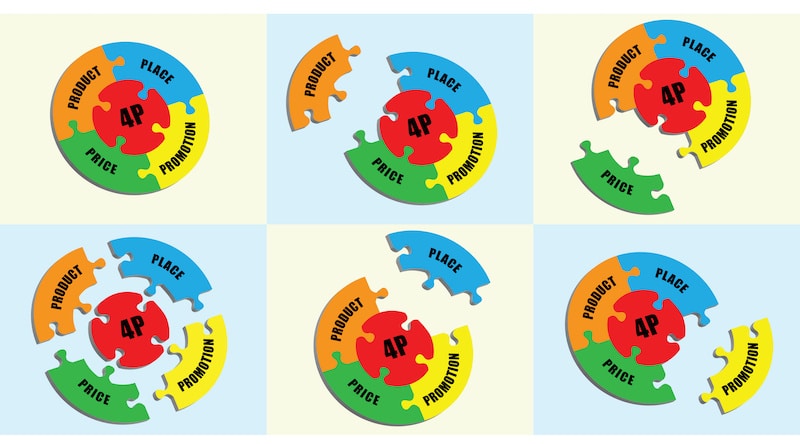How to Secure Success with Strategic Product Management
I recently looked back at the 15+ years I spent driving product portfolios and product teams. One striking conclusion is how misunderstood strategic product management is across the board.
At one of my companies, the vision provided by our senior leadership was tough to translate into action. Our teams were clueless, arguing over what made sense and which product strategies to employ. The outcome was a lot of confusion and misalignment at all levels. At another company, the overall vision was particularly spot-on and well-articulated. That sounds better, but the senior executive team also had a strong sense of ownership. As a result, it relegated product management into pure execution, with no real input on where the company should go. That was equally demoralizing for our teams.
I asked many of my friends to get a sense of how widespread the issue is and now realize these were not isolated cases:
“Most businesses end-up failing because leaders didn’t effectively allow product management to elevate to a strategic level and help formulate the vision of the company.”
The bottom line is that if you get it right, product management is where the sharpest visions originate. Isn’t product management supposed to distill the key insights about customers, what they have in mind? Doesn’t product management live at the center of the key trends that help better understand future technology, market, and even societal evolutions?
So, how can senior executives and product leaders leverage a more strategic product management function? And do it to benefit both the product and company’s bigger vision? Built on my own experience, here are a few critical areas, senior leaders and product teams can align on for success.
Principle #1 - Make Sure Strategic Product Management Basics Are Covered

Delivering the right products takes a lot of time and energy. Product management needs to interface with virtually every function in the company to make it happen. A lot of pure execution is involved. I won’t deny it. But, no matter what it takes, there are two areas that product management needs to own and deliver first to make the right impact on the overall business.
The classic 4 P’s. It includes genuinely understanding what’s in your customers’ minds. The customer can be a user or a buyer (or both). Product management needs to excel at distilling their big problems and turning these into requirements. Don’t limit this to pure product features. Requirements are also about economic conditions (pricing), where they expect to find the products (channel and placement). It’s also about understanding what will influence them the most (promotion). You get it. Strategic product management starts with mastering the classic 4P’s (Product-Pricing-Placement-Promotion)!
The key trends: I have seen a lot of debate over this one. Strategy teams are often the best positioned to analyze trends. They can help discern pure fads, from micro, mega, or even societal changes. But, I see product management is often the best aggregator of the key trends that will help senior leaders better understand what the future might hold. Whether these are technology or market related, product management must form an educated opinion on their likely impact to the business. Product management can not do most of the analysis alone. It should collaborate with the strategy team (when they exist), the CTO, outside analysts, and other relevant experts.
Principle #2 - Let Product Management Feed (not define) the Company Vision

Empowering product management doesn’t mean asking them to sort out the company vision in place of senior executives. It’s not their job. Instead, make sure product management “feeds” senior leaders with the right insights on the customer, the market, the key trends. One analogy I often made for my product leaders was:
“Product management is about being a great investigator, anthropologist, and psychologist.”
As such, identify all the relevant customer and market problems and cluster them effectively. Turn them into actionable insights and requirements. What product management typically does well at a single customer level also needs to be done at segment, category and market levels.
Empowerment also means that leadership needs to articulate clear, actionable directions based on feedback they received from strategic product management and other relevant functions. Senior executives should always have an idea of where they’re taking the company—no doubt about it. But with product management feeding them with the right insights, senior leaders have a solid basis for building proper scenarios and effectively establishing a credible vision. In turn, senior leaders will come back to the product teams with solid goals and directions. Don’t stop there! You need to establish a constant 2-way feedback flow that will help evolve the company’s principal direction over time. Vision is not static; it’s a destination. Depending on the journey’s conditions, that destination will shift. For more about this topic, see my other post on how to establish your best business vision.
Principle #3 - Build Aligned Product Vision and Strategic Roadmap

Defining the product vision is a key strategic product management dimension. While a company vision (the overall destination) is an aspiration, the product vision needs achievability. It is about product goals, the tangible impact we expect a product will have on the world. Again, the initial homework done with customers helps prioritize the problems to address (see my post “Focus on customers problems” for more). Like the company vision, the product vision is like an anchor you can refer to whenever you need to make decisions or do trade-offs. So, make sure you get it right. And, if you need to prioritize between competing product visions, use the company vision as your filter: which product vision aligns best with the company vision?
The product vision also needs to feed a proper strategic roadmap that covers multiple generations of products. A strategic roadmap is about the initiatives you are undertaking to fulfill your vision. It should look at all aspects of cross-functional planning. So, the strategic roadmap involves different teams, from engineering, to design, to marketing or even sales and will ensure fundamental alignment with all of them. Make it dynamic and highly collaborative. It will save you a lot of time and energy down the line. In the event the teams are struggling with prioritization (and they will), they should use suitable scoring methods and systematically keep applying the product vision as a filter to everything. The themes, the features that are the closest to the product vision, will win.
In Conclusion
Strategic product management establishes a framework if done the right way. With it, you’ll know you understand your customers and markets. Product teams and senior executives will have enough cycles to enable the right vision for the company. In turn, it will solidify the product vision and the associated initiatives (roadmaps) with all functions involved.
The key to success is regular checkpoints and communication across all teams, as drifts can happen fast. Last, but not least: you always want to keep the vision as the absolute filter for everything the company does.
I’m genuinely interested in getting your feedback on this topic! How successful have you been with strategic product management? Which other considerations worked for you? Just comment on this blog or drop me a note on The Product Sherpa site!
Also, if you want to fast-track your strategic product management, The Product Sherpa is here to help you. We offer custom makeover programs for you to practice your critical thinking and get results. You can drop us a note, or schedule a free exploratory call.
